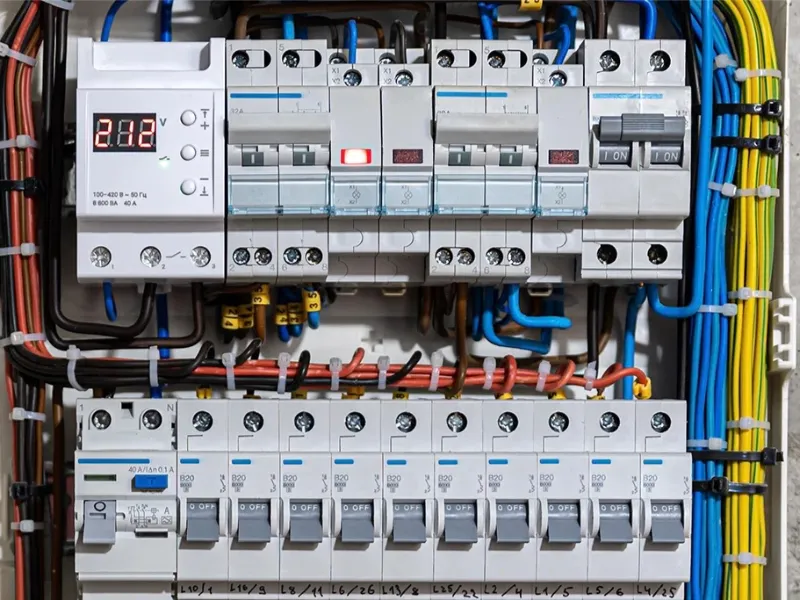- A power distribution board is an electrical panel that serves as a central hub for distributing electrical power to various circuits.
- While both power distribution boards and power distribution blocks are used to manage electrical power, they serve different functions and are employed in different scenarios.
Power distribution boards are vital components in managing electrical systems across various settings. They ensure safe and efficient power distribution, protect against electrical faults, and facilitate easy maintenance. By selecting the right board, ensuring proper installation, and performing regular maintenance, you can ensure the reliability and safety of your electrical system.
What is a power distribution board
A power distribution board is an electrical panel that serves as a central hub for distributing electrical power to various circuits within a building or industrial setting. It typically contains circuit breakers, fuses, and bus bars that divide and distribute the incoming power supply into multiple outgoing circuits. These boards are designed to manage the flow of electricity safely and efficiently, ensuring that each circuit receives the appropriate amount of power while protecting the system from overloads and short circuits.
Also read: VIA partners with Rutronik to expand edge AI solutions
Functions of power distribution boards
1. Distribute electrical power: They split the incoming power supply into multiple circuits, allowing different areas or equipment to receive power as needed.
2. Enhance safety: By incorporating circuit breakers and fuses, they protect the electrical system from damage caused by overcurrents or short circuits.
3. Facilitate maintenance: They allow for easy isolation of individual circuits for maintenance or repair without affecting the entire system.
4. Ensure compliance: They help meet electrical code requirements and standards by providing a structured and organised approach to power distribution.
While both power distribution boards and power distribution blocks are used to manage electrical power, they serve different functions and are employed in different scenarios.
Power distribution board is a comprehensive panel that provides a centralised location for distributing power to multiple circuits. It includes protective devices like circuit breakers and fuses, and is typically used in residential, commercial, and industrial settings to handle the main power supply and its distribution.
Power distribution block is a simpler component that consolidates multiple electrical connections into a single block, allowing for organised and efficient wiring. It does not typically include protective devices and is used to distribute power from a single source to multiple outputs within a smaller or more localised area, such as within a control panel or electrical enclosure.
Also read: How does power distribution work from generation to consumption?
Suggestions for using a power distribution board
1. Select the right size: Ensure the distribution board is appropriately sized for the electrical load and number of circuits you need to manage. Overloading a board can lead to overheating and potential safety hazards.
2. Ensure proper installation: Have the board installed by a qualified electrician to ensure it meets safety standards and code requirements. Proper installation is crucial for reliable and safe operation.
3. Regular maintenance: Periodically inspect and maintain the distribution board to ensure all components are functioning correctly and to prevent potential issues. Check for signs of wear, corrosion, or overheating.
4. Consider future expansion: If you anticipate future electrical needs or expansions, choose a distribution board with additional capacity or space for future circuit breakers.

